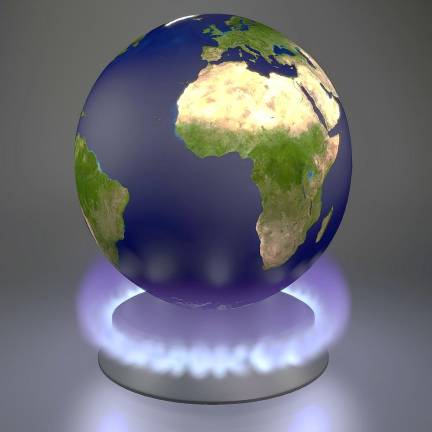DEC issues state greenhouse gas emissions report and implements Climate Leadership and Community Protection Act
Environment. The 2022 Statewide Greenhouse Gas Report was released, tracking greenhouse gas emissions from 1990 to 2020 to measure progress toward goals. The Climate Action Council Scoping Plan was adopted, setting strategies to meet goals.

The 2022 Statewide Greenhouse Gas Report was recently released, as announced by New York State Department of Environmental Conservation (DEC) Commissioner Basil Seggos. The report details statewide greenhouse gas (GHG) emissions for 1990 - 2020, expressed in tons of carbon dioxide equivalents from all greenhouse gas emissions sources in the state. The release of this report prior to the end of the year is intended to support the State’s ongoing work to meet requirements of the Climate Leadership and Community Protection Act (Climate Act).
“As last week’s historic finalization of the Scoping Plan demonstrates, New York continues to make progress implementing the Climate Act to reach our critical emissions reduction milestones,” DEC Commissioner and Climate Action Council Co-Chair Seggos said. “This report offers valuable information and insights on the changes in emissions attributable to impacts from the start of the COVID-19 pandemic, among other indicators of emissions sources.”
The Climate Act requires the State to achieve a carbon-free electricity system by 2040 and reduce GHG emissions 40 percent below 1990 levels by 2030 and 85 percent by 2050, setting a new standard for states and the nation to expedite the transition to a clean energy economy. The law drives investment in clean energy solutions such as wind, solar, energy efficiency and energy storage and ensures that at least 40 percent of the clean energy investments benefit disadvantaged and low- to moderate-income communities.
Climate Action Council Scoping Plan adopted
On Monday, Dec. 19, the State Climate Action Council adopted the New York State Climate Action Council Scoping Plan, which outlines recommended policies and actions to help meet the goals and requirements of the Climate Act.
The comprehensive report utilizes best available science and data to describe GHG statewide emissions, including those from electricity, industry, and agriculture. The Statewide GHG Report is unique in the U.S. for using the 20-year Global Warming Potential and including emissions associated with the generation of imported electricity and with the extraction and transmission of fossil fuels imported into the state. It also describes the contributions of the state’s forests and natural lands to collect and store carbon and to help the state reach its goal of net-zero emission by 2050.
The 2022 report describes the significant effect that the COVID-19 pandemic had on GHGs, particularly a 20 percent drop in transportation emissions. The report notes that 2020 is likely not a representative year in terms of overall emission trends, due to the impact of the pandemic. DEC will provide updated information through 2021 in the 2023 report next year. The annual emission totals provided will aid in tracking New York’s progress toward its 2030 and 2050 emissions limits established in the Climate Act, as codified in the Part 496 regulation DEC adopted in 2020.
The publication is available on DEC’s climate website.
New York State’s “Nation-Leading” Climate Plan
New York State’s climate agenda calls for an orderly and just transition to clean energy that creates jobs and continues fostering a green economy as New York State recovers from the COVID-19 pandemic. Enshrined into law through the Climate Leadership and Community Protection Act, New York is on a path to achieve its mandated goal of a zero-emission electricity sector by 2040, including 70 percent renewable energy generation by 2030, and to reach economy wide carbon neutrality.
It builds on New York’s investments to ramp up clean energy, including over $35 billion in 120 large-scale renewable energy and transmission projects across the state, $6.8 billion to reduce buildings emissions, $1.8 billion to scale up solar, more than $1 billion for clean transportation initiatives, and over $1.6 billion in NY Green Bank commitments. Combined, these investments are supporting more than 165,000 jobs in New York’s clean energy sector in 2021, a 2,100 percent growth in the distributed solar sector since 2011 and a commitment to develop 9,000 megawatts of offshore wind by 2035.
Under the Climate Act, New York will build on this progress and reduce greenhouse gas emissions by 85 percent from 1990 levels by 2050, while ensuring that at least 35 percent with a goal of 40 percent of the benefits of clean energy investments are directed to disadvantaged communities, and advance progress towards the state’s 2025 energy efficiency target of reducing on-site energy consumption by 185 trillion BTUs of end-use energy savings.